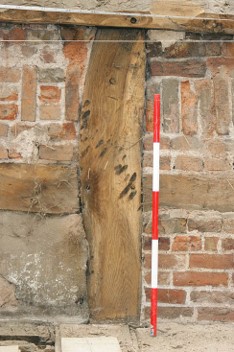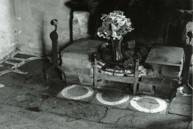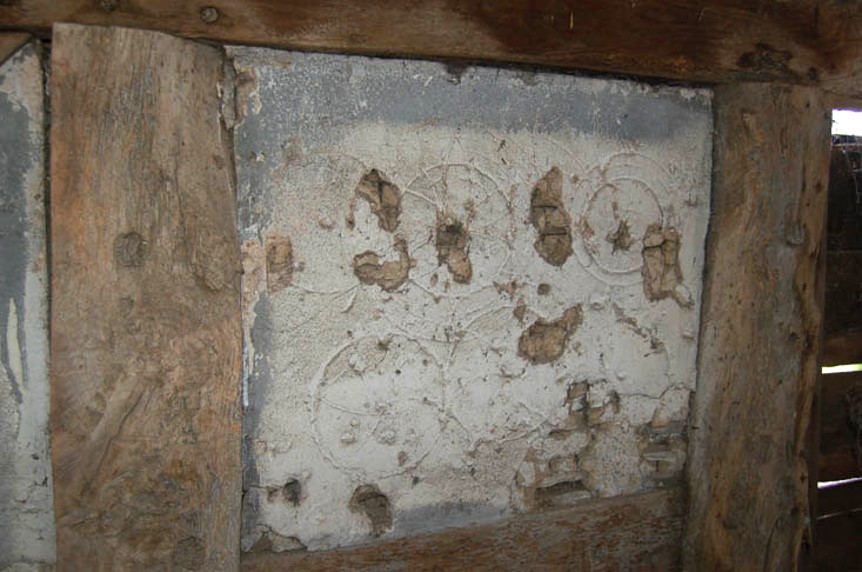Averting Evil: Evidence from Worcestershire Buildings
- 30th October 2014
As we celebrate Halloween and gorge ourselves on chocolate and sweets, the idea of all-pervading evil seems a long way away. But in the past this wasn’t the case. In the medieval and post-medieval periods, there was a real belief in evil, witches and demons. It was felt that they could attack you, your household, buildings or their contents and protective practices were developed to prevent harm from the evil. In historic buildings you can often find marks that were intended to protect the occupiers or contents of the building.
Gorgoneion – Head of Medusa used to ward off evil
Shona Robson-Glyde, our Historic Buildings Archaeologist, has put together a fantastic Powerpoint, which looks in detail at examples of apotropaic marks that were used to ward off evil throughout the centuries and provides real examples of these found across historic buildings in Worcestershire. You can access the full slideshow here.
 Daisy wheel found at Court Farm, Himbleton
Daisy wheel found at Court Farm, Himbleton

Burn marks. Court Street, Upton

Spectacle marks to ward off the evil eye – The Fleece Inn, Bretforton

Daisy Wheels. Court Farm, Himbleton
Do you know of any apotropaic marks in Worcestershire? If so, please send photographs and details of their locations to archaeology@worcestershire.gov.uk or leave us a comment here on the blog.
